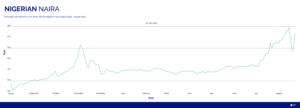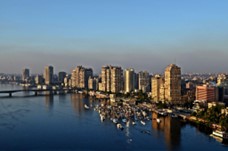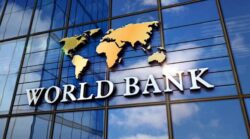Nigeria: Nigeria’s yearly growth slows amid currency volatility.
Ghana: Government of Ghana securities takes the forefront.
South Africa: BRICS summit provides optimism for the group.
Egypt: Optimism as BP announces $3.5 billion investment in gas exploration.
Kenya: Kenya shilling among worst performing currencies in Africa.
Uganda: Shilling depreciation likely as foreign reserves decline.
Tanzania: Shilling remains stable against greenback thanks to official intervention.
XOF Region: Local investors subscribe to state loan on the regional market.
XAF Region: Russia to consider setting up fertilizer manufacturing plant in Cameroon.
Nigerian Naira (₦)
Compiled by Ikenga Kalu
The naira strengthened overall from USD/NGN 918 to USD/NGN 913 despite some initial depreciation at the start of the week. It met some pushback at the 930 resistance level during the course of the week.
Nigeria’s Gross Domestic Product grew by 2.5% in the second quarter of 2023 although lower by 1.03% compared to 3.53% recorded in the corresponding period of 2022. The quarterly growth was driven mainly by the services sector according to the National Bureau of Statistics
The sudden naira appreciation is likely due to massive profit taking, following its two-week depreciation streak. We may see a trend reversal in the coming days near the 900 level.
Further reading:
Nairametrics – Nigeria’s GDP growth slows to 2.51% in Q2 2023

Ghanaian Cedi (GH¢)
Compiled by Sakina Seidu
This week, the GHS slipped to a rate of 11.4850 levels against the USD.
Ghana’s domestic debt restructuring (DDEP) which was a source of lament by the end of 2022, responsible for many of the losses recorded by some individuals and financial institutions has seen the payment of its first coupon this month. After this feat has been successfully achieved, the government is considering reopening the DDEP to allow those who were unable to sign up and are now interested to do so, Minister of State Dr. Mohammed Amin Adam said at the Finance Ministry.
However, this is yet to positively impact the secondary bond market as the total volume of trades fell by over 75% while bond prices experienced an increase. The short-term security market seems to be the current investment haven given the multiple oversubscriptions during the past few months especially for the 91-day treasury bill.
We expect the GHS to remain relatively stable with a steady flow of forex to accommodate retail needs.
Further reading:
Asaase — Government releases GHc 2.4 billion for DDEP first coupon payments
Myjoyonline — Government considers reopening DDEP for persons who didn’t sign up – Dr. Amin Adam
Myjoyonline — Bond market: Total market turnover falls sharply to ¢17.34m
CBN — Treasury bill auction sees oversubscription as interest rate increases

South African Rand (R)
Compiled by Alex Barmuta
The South African rand closed off last week at around USD/ZAR 18.60 and is trading at 18.53. When comparing the rand across the euro, British pound, and U.S. dollar, a weakening trend has prevailed since the start of this week.
At the BRICS summit in South Africa Aug. 24, 2023, it was announced that six countries have been invited to join the BRICS group — Iran, Saudi Arabia, the United Arab Emirates, Argentina, Egypt and Ethiopia. With much speculation around the reasons for this major shift, there is certainly no speculation around the amount of global power that this group would encompass.
South Africa’s budget deficit rose to R143.8 billion for the month of July, its highest since at least 2004 resulting in a weakening rand. With gross domestic product growth rates being released next Tuesday, we expect the rand to possibly reach the USD/ZAR 19 levels as loadshedding reveals its effect on the economy once again.
Further reading:
News 24 – Rand, bonds fall after record monthly budget gap
Reuters – BRICS welcomes new members in push to reshuffle world order

Egyptian Pound (EGP)
Compiled by Mitchell Diedrick
The Egyptian pound remains stable around USD/EGP 30.90 this week despite the emergence of several economic developments that will unfold in the next few months.
Oil giant British Petroleum (BP) announced that it will be investing $3.5 billion over the next three years into gas exploration mainly targeted around liquified natural gas (LNG). Over the summer the demand for LNG has risen sharply and total expected output is estimated to reach 8 million tons for 2033.
The BRICS summit was also held last week in Johannesburg, South Africa, where it was announced that the group would open membership for a few more countries including Egypt, Saudi Arabia and the UAE effective from January 2024. In 2022 the BRICS group already made up 21% of Egypt’s foreign trade and this is likely to increase after January 2024.
In the week ahead we expect the pound to remain stable until these inflows and trade opportunities take effect.
Further reading:
Egypt today – Trade exchange between Egypt, BRICS states rise by 21% in 2022
AL-Monitor – Egypt to drill 35 gas wells by 2025 as BP invests

Kenyan Shilling (KSh)
Compiled by Terry Karanja
The Kenyan shilling is trading at the levels of USD/KES 145.20 to 145.50 against the dollar which is a new all-time low. In Africa, the shilling has been ranked as the sixth worst performing currency as it dropped by more than 15% against the U.S. dollar after the following currencies: the Nigerian naira, Angolan kwanza, Egyptian pound, Congolese franc and Liberian dollar. The weakening of the shilling is attributed to the strengthening of the U.S. dollar against emerging market currencies, the rise in global commodity prices leading to higher demand for dollars from oil importers and the manufacturing sectors. Also, there has been a reduction of dollar receipts from agricultural produce which supports the shilling. The US government invests $1.6 million into a Kenyan coconut processor, Kenstate, to expand the firm’s exports to the U.S.. The project is expected to create employment opportunities and other benefits. The shilling is expected to weaken further in the coming week, driven by demand for dollars from the manufacturing and energy sectors.
Further reading:
Kenyan wallstreet — Kenya Shilling is 6th Worst Currency Performer in Africa
The east african — Kenyan firm gets $1.6 to lift US coconut exports

Ugandan Shilling (USh)
Compiled by Yadhav Panday
USD/UGX traded at 3,715 on Wednesday, Aug. 30, 2023, up 0.11% from last Friday. Looking ahead, we expect USD/UGX to rise as Uganda’s foreign exchange reserve fell to $3.6 billion due to a variety of factors, including increased debt servicing and repayment in the midst of a difficult global and domestic economic environment. The current account deficit increased to $3.7 billion (7.5% of gross domestic product), while the financial account surplus increased by 9.1% to $3.2 billion.
Further reading:
Monitor — BoU projects foreign reserve to rise to $4.4b

Tanzanian Shilling (TSh)
Compiled by Kristin Van Helsdingen
The Tanzanian shilling showed some resistance this past week against the U.S. dollar. It closed the week at USD/TZS 2,489, with the shilling strengthening from an average rate of USD/TZS 2,502 in the previous week. The shilling has continued to remain stable this week, trading around USD/TZS 2,499.
This past week, the Tanzanian government has been working alongside the Bank of Tanzania on measures to mitigate the country’s shortage of U.S. dollars. This includes selling high volumes of dollars to banks to strengthen the shilling and supporting local export companies through various means. Evidently, the currency pair reacted well to these measures, remaining stable throughout the week.
As Tanzanian officials continue to have a firm grip on the value of the Tanzanian shilling against the U.S. dollar, we expect the shilling to move with the dollar in the week ahead against other currencies. USD/TZS is expected to remain around the 2,500 level.
Further reading:
AFRICA Press – DOLLAR SHORTAGE: Govt steps up measures
| Final graph/chart image from Infogram here (pulls from this data). |
West African CFA Franc Region (XOF)
Compiled by Yashveer Singh
On Aug. 24, 2023 Senegal successfully raised 99 billion FCFA (approximately 150 million euros) in the public securities market through an issuance of three assimilable Treasury Bonds (OAT) with maturities of two, three, and five years. Despite initially seeking 90 billion FCFA, the operation generated an order book of 100 billion FCFA, leading Senegal to opt for the higher amount. The unit nominal value for all three OATs was set at 10,000 FCFA.
The coverage rate exceeded 111%, with the two-year OAT raising 49.43 billion FCFA at a weighted average yield of 7.03%, and the three-year and five-year OATs each raising 31.74 billion FCFA and 17.83 billion FCFA, respectively, both at a 7.51% weighted average yield. Notably, this operation involved offers and selections exclusively from within Senegal, primarily involving specialists in Treasury securities.
Further reading:
Sikafinance — UMOA/Senegal: Local investors, the only ones to subscribe to the State loan on the regional market
Central African CFA Franc Region (XAF)
Compiled by Yashveer Singh
Russia is exploring the possibility of establishing a fertilizer manufacturing plant in Cameroon to strengthen agricultural collaboration between the two nations. This initiative was revealed by the Russian ambassador to Cameroon Anatoly Bashkin, during a meeting with Agriculture Minister Gabriel Mbairobe. It could shift Russia from being an exporter of fertilizers to Cameroon to becoming a local producer. Currently, Russia holds a significant 43% market share in Cameroon’s fertilizer supply, while China contributes just 11%. Cameroon’s import expenditures surged by 43.4% between January and September 2022 due to Russia’s invasion of Ukraine.
The establishment of a Russian fertilizer manufacturing unit in Cameroon is expected to positively impact Cameroon’s trade balance, which has been negative for an extended period. Notably, previous attempts to build such plants in Cameroon have faced delays, with one German project still pending due to unfavorable gas prices. Additionally, three more similar projects are in the pipeline, as the government plans a subsidy to stabilize rising fertilizer prices caused by the Russia-Ukraine conflict.
Further reading:
Business in Cameroon — Fertilizer: Russia, Cameroon’s leading supplier, plans a manufacturing plant to enhance agriculture cooperation
| Final graph/chart image from Infogram here (pulls from this data). |










